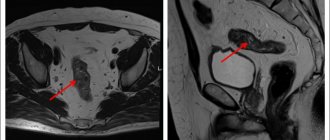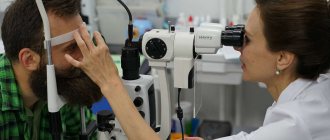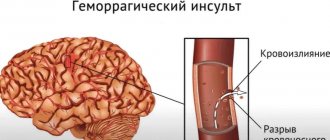General information
The state of delirium is a thinking disorder in which ideas, conclusions, and reasoning arise that do not correspond to reality. The patient is completely convinced of his conclusions and judgments and cannot be corrected. As evidenced by Wikipedia and other sources, delusional disorder is a component of symptoms in schizophrenia and other psychoses . Together with hallucinations, delusions belong to the group of “psychoproductive symptoms.”
Delirium is a thought disorder and a symptom of brain damage. Such thinking disorders in psychiatry are classified as pathological judgments. Experts note that delusions are egocentric and affective. Delirium can be treated using methods that act directly on the brain.
Doctors note that in colloquial language the word “delirium” is used in a meaning that differs from the psychiatric one. Therefore, from a scientific point of view, in this case this definition is used incorrectly. What types of delirium exist, as well as how to treat this condition, will be discussed in this article.
Service price
- HOSPITAL Day hospital5 000
- Day hospital with intensive care8,000
- 24-hour hospital (all inclusive, cost per day) 12,000
- 24-hour hospital (all inclusive, cost per day). Single occupancy24,000
- 24-hour hospital (all inclusive, cost per day). Single occupancy in a superior room 36,000
- Primary family counseling for relatives of patients undergoing inpatient treatment free of charge
- Group psychotherapy for relatives of patients undergoing inpatient treatment free of charge
- Group psychotherapy for 24-hour and day hospital patients free of charge
- Individual post for a hospital patient (if indicated)6,000
Rave
- erroneous conclusions, false conclusions and incorrect generalizations that arose on painful grounds and cannot be dissuaded. That is, not all misconceptions should be interpreted as nonsense.
Rave
- These are thinking disorders. Thinking is one of the forms of human mental activity. Like any function of the body, it can work normally, or it can be disrupted, mainly due to diseases and pathological conditions. In addition to delirium, thinking can be disturbed in the form of obsessions, overvalued ideas, increased thoroughness, etc.
Delusions practically never occur in isolated form, so they are considered only a symptom or syndrome (a combination of symptoms with a common mechanism of action) in the overall structure of the entire mental illness.
Delusional disorders are always accompanied by disturbances in other areas of the psyche: perception (illusions and hallucinations), memory (decreased, increased or distorted), attention, mood, emotions, volitional activity, consciousness, personal sphere and character. In addition, delusion always covers a person’s behavior, changes it, and forces it to perform actions dictated by painful delusions.
Classification
Depending on the development mechanism, there are:
- Primary – it is based on a violation of abstract cognition. It is also called interpretive delusion . It is often a chronic disorder and can persist throughout life. In this case, the primary defeat of thinking occurs. The patient's rational, logical cognition is affected. His distorted judgments are supported by subjective evidence, which is built into its own system. This delusional disorder is characterized by persistence, as well as progression in the process. There is a systematization of “evidence”: in the patient’s mind they form a stable system, and what does not fit into it can be ignored.
- Secondary - it is also called sensual and figurative . In this case, sensory cognition is disrupted, and the person perceives reality illusorily. Delusions are unsystematic, inconsistent and changeable. It may contain ideas with opposite meanings. Delusional ideas are not substantiated and do not have logical constructions. The actions of such a patient are often impulsive. With sensual delirium, its plot is visual, specific and emotionally vivid. With figurativeness, scattered, fragmentary ideas are noted, similar to fantasies or memories.
- Delusion of imagination - some experts distinguish it as this disorder is different from interpretative and sensory. In this case, delusional ideas are based on fantasy and intuition.
According to the content of delirium, the following forms are distinguished:
- With low self-esteem.
- With increased self-esteem.
- Persecutory (delusions of persecution).
- Mixed forms - persecutory delusions with increased or decreased self-esteem. In turn, this form is further divided into a number of subspecies with different symptoms.
Different types of delirium are defined depending on the characteristics of its manifestation. In modern medicine, the following types of mental disorder are distinguished:
- Acute delirium - it is defined if such a state completely takes over consciousness.
- Encapsulated - in this case, the patient adequately analyzes the surrounding reality if it does not relate to the topic of his delirium.
- Hallucinatory – develops as a result of impaired perception. It is dominated by hallucinations and illusions. At the same time, ideas are inconsistent and fragmentary, sensory cognition is disrupted. The thinking disorder is secondary. The patient has a delusional interpretation of hallucinations and no conclusions.
According to the dynamics of development, the following types of delirium are distinguished:
- Systematized - in order to confirm his own thoughts, the patient provides numerous interrelated evidence. He can clearly answer all questions regarding his morbid ideas. Since it takes time to form such a stable evidentiary connection, this type of delusion is long-term and chronic.
- Unsystematized - acute delirium that arises, devoid of a coherent system of manifestation and evidence. However, it can occur not only in acute psychoses. Patients talking about their fantastic ideas do not support them with anything.
According to the degree of manifestations, they are distinguished:
- Delirium of a small scale (domestic relationships) - as a rule, manifests itself in psychosis in older people.
- Megalomaniac (delirium of enormity) – the patient expresses the most fantastic ideas.
- Delusions of grandeur - manifested by the fact that a person insists on the uniqueness of his abilities. Those who exhibit delusions of grandeur may call themselves “the world’s greatest scientists,” “the creators of all life,” etc.
There are also special forms of this condition:
- Induced delusion - develops as a result of communication with a close relative who has a mental illness. The latter is the inductor, whose wild ideas (which, as a rule, are relatively plausible) are taken for granted by the inductee. Inducible delusions manifest themselves in those who perceive the inductor as a very authoritative person, as well as in people with congenital mental disorders (hysteria, infantility, suggestibility, etc.). This condition is not permanent and goes away as the situation changes.
- Residual - develops after suffering acute psychosis with clouded consciousness. The person is confident that everything he experienced in a painful state was reality.
- Highly valuable ideas are judgments that arise on the basis of real facts. In the patient’s mind they are overestimated and exaggerated. The patient does not treat his beliefs critically; such judgments occupy a dominant place in his thinking. An example of such ideas could be ideas of persecution, jealousy, fanatical religious beliefs, etc.
- Obsessions are spontaneously occurring obsessive pathological ideas to which a person is critical. Similar ideas are usually observed in patients with neurotic pathologies. However, they also occur in healthy people.
- Obsessive fears (phobias) - with this disorder, a person has a pathological fear of certain things or phenomena. In people with neuroses , they are most often closely connected with reality. For example, claustrophobia is the fear of closed spaces, thanatophobia is the fear of death, etc. The most common fear is fear of serious illnesses ( nosophobia ).
Delusional syndromes
There are three main delusional syndromes:
- Paranoid syndrome is a systematized interpretive delusion.
- Paranoid syndrome is unsystematized; as a rule, hallucinations and other disorders occur.
- Paraphrenic syndrome is systematized, fantastic, hallucinations and mental automatisms appear.
Treatment of delusional disorders
In the clinics of the Dynasty network, classic proven technologies are used in combination with new psychological approaches to help patients with this pathology.
The treatment of delusions is based on delusions of persecution, jealousy, invention, depressive delusions, etc. – use of medications and psychotherapy.
The treatment regimen uses modern psychotropic antipsychotics, as well as antidepressants and, in some cases, tranquilizers.
Sensitive clinic specialists carefully approach each patient and prescribe complex psychotherapy to shift attention to constructive ideas. Behavioral therapy is used, and relatives are advised to protect the person from stress.
In severe cases, it is possible to hospitalize the patient in a comfortable private hospital of the Dynasty network for a speedy normalization of the condition.
Causes
The development of this mental disorder is influenced by a number of predisposing factors:
- genetic – a predisposition to certain mental illnesses, which is inherited;
- physiological – organic damage to the nervous system;
- biological – imbalance of neurotransmitters in the brain;
- psychological – stress, other psychological imbalances;
- social – alcoholism , drug addiction, drug abuse, etc.
Delusional schizophrenia-like disorder often develops due to a genetic predisposition. It may also be related to biological and environmental factors. Schizophrenia-like disorder can manifest itself due to a variety of reasons, the most common of which are the following:
- Temporal lobe epilepsy .
- Neuroinfections - encephalitis , neurosyphilis , etc.
- Tumor lesions of the brain (late stages).
- Traumatic brain injuries.
- Vascular diseases of the brain - severe form of cerebral atherosclerosis , cerebral thromboangiitis , hypertension .
- Toxic effects of drugs.
- Alcohol abuse or drug addiction.
- The influence of toxins .
- Somatic pathologies in which the nervous system is involved in the pathological process (in rare cases).
Symptoms
Symptoms of delusion are expressed, first of all, by the fact that the patient believes in false judgments, conclusions and conclusions, taking them for reality. Delirium occurs due to a specific disease and is its manifestation. Symptoms depend on the type of delirium. Organic delusional disorder is a condition characterized by the presence of dominant, well-systematized delusions in the patient. However, unlike schizophrenia, organic schizophrenia-like disorder does not have strong psychotic manifestations. The main manifestation that characterizes chronic delusional disorder is delusion. An organic disorder can manifest itself in various delusional ideas with different plots. Despite the fact that chronic schizophrenia-like disorder manifests itself with symptoms typical of schizophrenia, it does not lead to the development of a schizophrenic defect.
The plot of delirium
The plot of delirium is its content, according to which one or another of its varieties is determined. In the case of interpretative delusions, the plot is not a sign of illness and depends on a number of factors influencing the patient - cultural, social, psychological, etc. There can be many plots, but most often ideas arise that can be generalized into three groups of delusional states.
Paranoid
In this case, the person is sure that he is being influenced by an external unfavorable influence. This type includes:
- Delusion of persecution (persecutory delusion) - a person thinks that he is being watched or being pursued. Symptoms of delusions of persecution are sometimes manifested by the fact that the patient is convinced that there is a certain conspiracy theory with the aim of causing him any harm. The persecutory type of delusional disorder leads to the fact that the patient suspects close people, neighbors, colleagues, etc. of persecution.
- Delusion of damage is the belief that someone is deliberately damaging the patient’s property or stealing things. As a rule, people who communicate with the patient in everyday life are suspected of this.
- Delusion of relation - a person is sure that the whole reality that surrounds him is directly related to him. It seems to him that all conversations and actions of other people are connected with a special attitude towards him.
- Delusion of influence - a person is sure that they are trying to influence him physically (with devices or rays), mentally, etc.
- Delusions of jealousy – this condition is also called “Othello syndrome.” Pathological delusions of jealousy in men can manifest themselves against the background of alcoholism, drug addiction, schizophrenia and other diseases that are not treated correctly. More often, pathological jealousy is observed in men, which is manifested by delusional ideas of infidelity, constant suspicion, and fixation on the personality of the partner. Often men also make aggressive attacks towards their partner. Pathological jealousy is less common in women. Most often, this pathology is observed in women with alcohol addiction. Characteristic signs of Othello syndrome are attacks of aggression and psychosis.
- Delusion of staging (intermetamorphosis) - the patient is convinced that everything around him is specially arranged and some kind of performance is being played out.
- Paraphrenic delusion – the patient has a combination of fantastic and delusional ideas, usually of greatness and persecution.
There are other types of delusional disorders of this type.
Delusions of grandeur ("megalomaniac")
This category includes the following types of delusional disorders:
- Delusion of origin - a person is convinced that in fact his parents are high-ranking people, that he comes from a noble family, etc.
- Delirium of invention - a person promotes various unrealistic projects, passing them off as real inventions.
- Delusion of eternal life - the patient is sure that he will live forever.
- Delusions of love - manifests itself more often in women. Its essence is the belief that the patient is loved by a famous person, or that everyone falls in love with him. Delusions of love can lead to the patient unceremoniously invading someone's relationship.
- Religious nonsense - a person is sure that he can perform miracles, considers himself a prophet.
Depressive delirium
- Hypochondriacal or somatic delusion - a person is convinced that he is sick with some serious illness.
- Dermatozoan delusion - a person is convinced that he is infected with parasites, although he has no signs of infestation.
- Delusion of inferiority - the patient is convinced that he is physically or mentally inferior.
- Nihilistic delusions - manifested in psychotic bipolar disorder. In this case, the patient has a false feeling that the world around him or himself does not exist.
- Cotard's delusion - manifests itself in patients with Cotard's syndrome. Such people have delusional ideas filled with hypochondriacal and nihilistic vivid beliefs against the background of a melancholy and anxious affective state. For example, people who exhibit Cotard's delirium may complain that they have no heart, that they have infected everyone with a serious illness, that they have died a long time ago. Such patients develop the belief that everything is lost, the world is empty.
There are other types of delusional disorder that are associated with certain medical conditions. For example, in people suffering from alcoholism, drunken delirium, etc., may appear as a symptom.
If we talk about the general features of the manifestation of delusional disorder, then the following signs should be noted:
- Occurs as a sign of a certain disease.
- It is characterized by paralogicality - construction on the basis of internal logic, based on the internal needs of the human psyche.
- There is no impairment of consciousness.
- Ideas do not correspond to objective reality, but the patient is convinced of their reality.
- Resistance of ideas to correction, immutability of beliefs.
- Intelligence is maintained or weakened insignificantly.
- There are profound personality changes provoked by fixation on a delusional idea.
Types of delusions
Delirium happens:
- primary
- secondary
- induced
Primary delirium
It is also known in medical literature as autochthonous. It arises abruptly (and not gradually), and the person is completely convinced of his idea, and before the occurrence there were no mental events-causes. For example, a person diagnosed with schizophrenia may suddenly begin to think that he is turning into an alien creature, although there were no events that could lead the patient to such thoughts. All the signs of primary delirium are present here: suddenness, full formation and absolutely convincing form.
The primary delusional state is not in all cases associated specifically with ideas. This may be a perception or mood of a delusional nature. They are also not preceded by cause events. If you are not careful in the diagnosis, you can make an erroneous diagnosis of primary delirium without examining previous events and cases.
Secondary delusion
It is a consequence of a past pathological experience. It may be a consequence of mood, hallucination, or a previously occurring delusional idea. When a certain number of secondary delusional ideas gather in the patient’s head, a complex system can be formed in which one thought will pull a second and be a consequence of the previous one. This is the so-called systematized nonsense .
Induced delirium
In some cases, this type of delirium is recorded. Healthy people around (family, friends, colleagues) try to challenge the patient’s delusions and prove to him the truth. But it also happens that those around them adopt a delusional idea and begin to believe what the patient says. This condition is also called insanity for two. When a couple of a sick and healthy person separates, in such cases the healthy person is not left with delusional ideas.
Tests and diagnostics
To establish a diagnosis, it is necessary to conduct a comprehensive examination. If necessary, psychiatric, instrumental, and laboratory diagnostic methods are used. Initially, the doctor interviews the patient or his relatives to find out about symptoms, previous injuries and illnesses, as well as other factors that could affect the patient’s condition. Next, laboratory blood tests are performed to determine signs of infection, levels of vitamins and electrolytes, the presence of toxic substances, etc.
A thyroid function test, electrocardiogram, CT, MRI and other studies may be performed.
It is important to distinguish delusions from delusions of people who are mentally healthy. To do this, the doctor takes into account several important facts. So, for the appearance of delusional ideas there must be pathological reasons, that is, diseases. In addition, delusions, unlike delusional ideas, are associated with objective circumstances. Misconceptions can also be corrected. Delusional ideas contradict a person’s previous worldview - when he was healthy, such conclusions were not characteristic of him. However, psychiatrists note that differential diagnosis is often difficult.
Delusional mood, perceptions and memories
When delirium first develops, a person begins to experience different emotions and looks at the world differently. For example, ideas can be scary, and then a person begins to live in constant fear and apprehension. He begins to explain everything that is happening in his life, all the surrounding moments, as confirmation of his theory.
As a rule, a crazy idea arises first, and then the mood. But the reverse development is also likely. For example, first there may be a change in mood, and then delusional ideas. In some cases, the patient suddenly begins to invest new meaning into familiar objects. Then this is a delusional perception.
There is a so-called Capgras syndrome. The patient begins to believe that his friends or relatives have been replaced by impostors who copy the appearance of that person. In other cases, Fregoli's delusions are recorded: the patient believes that a stalker is hiding behind several people, who is made up so that his appearance cannot be recognized.
Delusional memories are illogical ideas about the past. The term cannot be considered quite accurate, because it is the interpretation of the memory that is delusional, not the memory itself.
Prevention
Methods for preventing the manifestation of such disorders are currently unknown. The only important aspect of prevention is early diagnosis of the disease that provoked such symptoms.
As for preventing the manifestation of such disorders in patients with mental disorders, the following preventive measures can be provided to them:
- Performing light exercise.
- Listening to relaxing music.
- Drink enough fluids to prevent dehydration.









